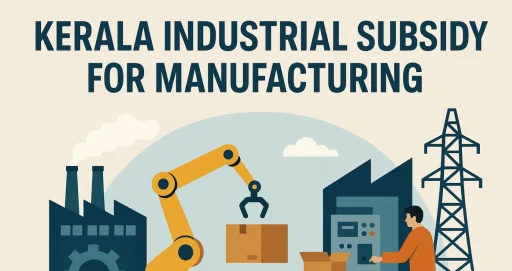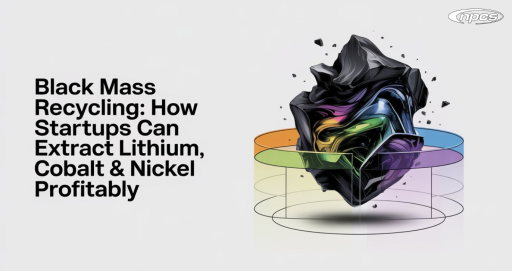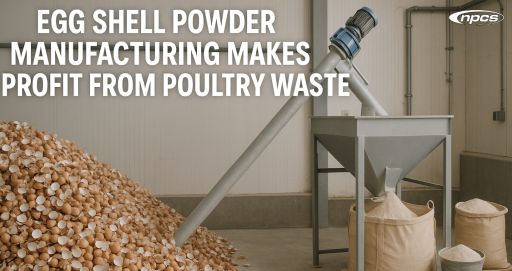The medical devices manufacturing industry in India is in the process of a radical transformation, hoping to find its way into global supremacy in MedTech innovation. Two critical government initiatives form the basis of this shift: the Production-Linked Incentive (PLI) scheme and the Make in India campaign. These initiatives are not only meant for self-reliance, but rather, put India one step ahead in the international community as an exporter competing in the global healthcare ecosystem.
India’s MedTech Ambition: From Importer to Innovator
India’s medical device industry, heavily dependent on imports traditionally but presently valued at about $11-16 billion, is projected to advance exponentially to reach $50 billion by the year 2030. This extraordinary leap is powered by upsetting government incentives, a conducive industrial ecosystem, and an array of technological innovation. As the share of the Indian market is destined to move from an existing 1.5% to an ambitious 10-12% by 2047, it is evident that the segment is simply in its sun-grazing mode.
Central to this transformation is the Production-Linked Incentive (PLI), which is aimed at promoting domestic manufacturing. In the same vein, Make in India is building a resilient supply chain by developing self-sustaining capabilities, attracting foreign direct investment (FDI), and motivating startups to innovate.
Make in India: A Catalyst for Domestic Manufacturing
Make in India is an initiative started in 2014 to transform India into a global manufacturing hub across sectors, including medical devices. By creating MedTech clusters and facilitating regulatory policies, Make in India will directly tackle historical high import dependency, which has reached up to 80% for advanced equipment.
Under this initiative, thirteen greenfield plants have been inaugurated to manufacture high-end devices such as linear accelerators used for cancer care and coronary stents, among others. The programs initiated under the Make in India comprise a growing number of successful initiatives already. In 2023, India, for the first time, was even able to reduce its medical device imports, signaling a paradigm shift toward domestic strength.
Production-Linked Incentive (PLI): Fuelling Local Innovation
The Production-Linked Incentive (PLI) scheme, introduced in 2021, provides 5-10% of financial incentive on incremental sales of domestically manufactured medical devices. The specific incentive is targeted at critical segments, including imaging equipment, implants, and surgical instruments.
Supported by the Production-Linked Incentive (PLI), multinational giants such as Philips, Wipro GE, and Trivitron have expanded in India. Consequently, the scheme has created over 15,000 jobs and increased exports by $2.34 billion in 2024 — a 5.74% increase Year on Year.
Because of the huge impetus given by Production Linked Incentive (PLI) and Make in India, India has now emerged as the second-largest manufacturer of PPE kits in the world.
Technological Advancements Driving Global Competitiveness
India’s MedTech industry uses state-of-the-art technologies for services in global markets.
- Artificial Intelligence (AI): Tools fueled by AI help enhance early detection of diseases. Qure.ai, among many other start-ups, provides satisfactory accuracy-95% in some instances-for analysis of radiology scans.
- Robotics: New companies from the home turf, like SS Innovations, are developing surgical robots for 50% of globally available prices.
- 3D Printing: It is also India’s first and Asia’s first 3D bioprinting facility for artificial organs, located in Andhra Pradesh MedTech Zone (AMTZ).
- IoMT Devices: Indian companies manufacture wearables and IoMT-enabled devices such as smart glucose monitors and smart blood pressure cuffs, which facilitate remote patient care.
The Make in India ecosystem makes significant contributions towards enabling the matching infrastructure for such innovations in plug-and-play manufacturing, as well as towards collaborative efforts for global technology transfer.
Key Drivers of Growth
1. Supportive Policies
- Production Linkage Incentive (PLI): Manufacturers receive direct benefits and rewards for increasing their volume of production and exports.
- Make in India: Manufacturing clusters through much streamlined regulatory norms and rebate incentives to lower imports.
- National Medical Devices Policy 2023: R&D will be established, along with infrastructure development and frame building.
2. Growing Healthcare Demand
- 2.1 million medical tourists annually visit India. There are increasing chronic diseases, penetration of insurance schemes, and growing health awareness that contribute to the demand.
- The Production-Linked Incentive scheme is helping to boost the manufacture of goods to meet the demands of customers at home and abroad.
3. Investment in R&D and Infrastructure
- With Make in India, construction of AMTZ and many medical parks is possible. This makes costs in manufacturing and time-to-market dramatically lower.
- Most companies take advantage of R&D grants and tax exemptions under Make in India as well as the Production linked incentive (PLI).
Success Stories: Indian Companies Making a Mark
Under Make in India and Production-Linked Incentive (PLI), many Indian companies have prospered:-
- Akshay Medical Devices: A Pune-based startup that makes affordable MRI machines-40% lower cost than imports.
- BPL Medical Technologies: Produce cost-effective ventilators and monitors and reduce overall costs of healthcare equipment by 30%.
- SS Innovations: Developed India’s first indigenous surgical robot, and is a proof of the strength of the PLI initiative.
Challenges in the MedTech Sector
The medical devices sector in India is making progress but faces some very serious challenges. These are –
- High Import Dependency: All high-end devices such as MRIs and pacemakers continue to be imports.
- Regulatory Delays: Entry to the market is gradually slowed down by cumbersome approval procedures.
- Funding Woes: Often SMEs do not have access to venture capital or government grants.
The government is trying to remove these challenges through a Single Window Portal. It has also supported one component of the Make in India and the other PLI schemes to give relief over these barriers..
Future Outlook: India as a Global MedTech Hub
India on its part is planning to:-
- Develop a $50 billion medical device market.
- Contribute to 5% to the global market share.
- Annually export devices worth $10 billion to countries like Africa, Latin America, and Southeast Asia.
This is a consistent trend of growth with a focus on Make in India as well as through the continued operation of the PLI strategies.
Strategic Recommendations
If a country wants to speed up MedTech aspirations:
- Extend the Production-Linked Incentive (PLI) scheme to newer technologies such as nanotechnology and biodegradable implants.
- Promote synergy in research and development between academia and industry.
- Introduce skill development courses on advanced manufacturing and regulatory compliance.
- Continue to develop smart medical manufacturing parks across different states with the support of Make in India.
Conclusion
This heralds the new era for India’s medical devices manufacturing sector. With strong backing from the Production Linked Incentive (PLI) scheme, and the Make in India initiative. This country is on its way to creating a world-class MedTech ecosystem that will combine affordability and innovation.
India is set to do more than meet its internal demand-the country will emerge as a trusted global supplier of high-quality medical devices-by addressing structural challenges and investing in technology, talent, and infrastructure. India’s MedTech future looks bright-with consistent policy support and strategic execution. Both as a manufacturing hub and a global healthcare partner.
Some More Links
Join With Us
Related Blogs
https://www.niir.org/blog/starting-a-silicon-crystals-business/
https://www.niir.org/blog/the-most-profitable-chemical-industry-business-in-the-philippines/#
Join us on YouTube
https://www.youtube.com/c/NIIRproject/playlists







